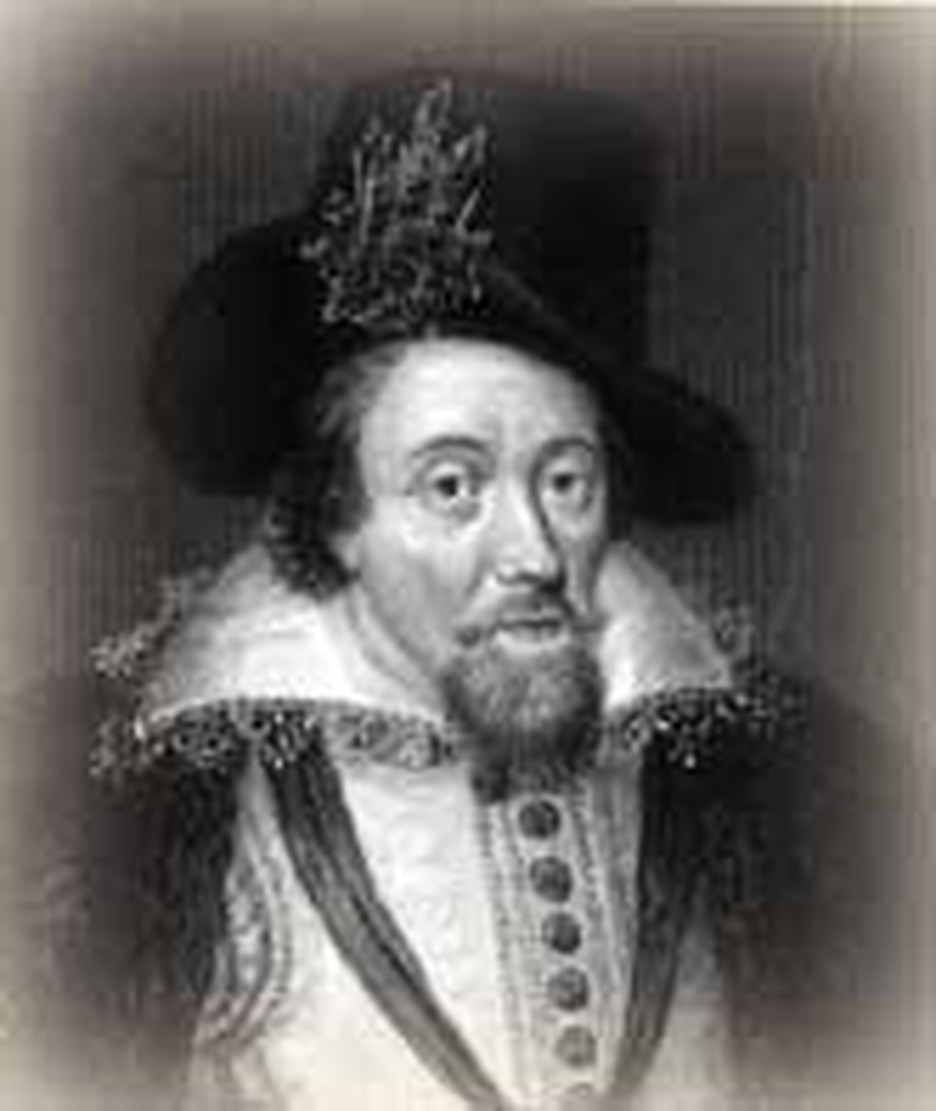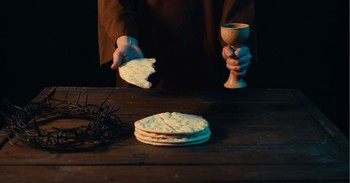
Have you ever attended a frustrating meeting where nothing much seems to get done? The Hampton Court conference, held in 1604, was like that. When James VI of Scotland rode south to London on the way to the coronation that would make him James I of England, Puritans presented him with a petition, pleading for freedom from man-made rites and ceremonies in worship. Since over 1,000 leaders of these reform-minded Christians signed the petition, James could not ignore it.
He called for a conference of churchmen and theologians to be held at Hampton Court, one of the royal palaces. But his attitude toward the event was signalled by the wording of the summons, "for the hearing, and for the determining, things pretended to be amiss in the Church." [our italics]
The Puritans thought that the Church of England had kept too many Catholic practices. They wanted church government put in the hands of the people, rather than a heirarchy of bishops and archbishops. But the Puritans weren’t going to get their wish. The king made that plain at Hampton Court. He recognized the democratic tendencies of Puritanism and suspected that if the people dumped bishops they one day might dump their king. James and his son, Charles I, harassed the Puritans so fiercely that many fled to America.
James and the Puritans did agree on one thing at Hampton. When Dr. John Reynolds, President of Corpus Christi College, Oxford, proposed a new translation of the English Bible, he found James enthusiastic. The king detested the Geneva Bible, the most popular translation in use in England. He considered its margin notes “very partial, untrue, seditious, and savoring too much of dangerous and seditious conceits.” In other words, the Geneva Bible did not support the theory that kings have divine right to rule, even if they behave badly. James wanted a Bible free of political and theological notes.
And so, on this day, January 17, 1604, the motion was carried "...that a translation be made of the whole Bible, as consonant as can be to the original Hebrew and Greek; and this to be set out and printed, without any marginal notes..."
Forty-seven of England's top Bible scholars were appointed to do the work. In an effort to diminish bias, both Anglicans and Puritans were included. King James himself organized the task. The translators were counted off into six panels (three Old Testament, two New Testament, one Apocrypha). The king charged them to stick as close to the earlier Bishop’s Bible as accuracy would allow, but to take into account earlier versions. In the end, the new translation borrowed about seventy percent of its wording from William Tyndale’s vivid translation.
The procedure was to assign each translator a portion of Scripture. He had to present his work to the others in his group for approval. Each book was then sent to the five other groups for review and criticism. With this procedure, each book was scrutinized by every member of the team. A committee of twelve--two from each team--made a final review.
By 1611, the translation was complete, but it would take years for this Bible to win general acceptance. Readers who had memorized scripture from earlier versions hesitated to adopt new wordings. One scholar opposed it on the grounds he was preparing a better version! Others complained that it was not consistent and that there were spelling errors.
Because James was so closely involved with the work, the 1611 translation is often called the "Authorized Version" (in America, the "King James Version"). In time it became the most beloved English translation. Through its powerful rhythms and pleasing phrases, it shaped the language of the Bible-reading public. A few denominations consider the King James Version virtually inspired, the only acceptable translation for reading and study.
Bibliography:
- Bruce, F. F. History of the Bible in English. New York: Oxford University, 1978.
- Christian History Institute files.
- "Bible-History of the English Bible." Enclyclopedia Americana. Chicago: Encyclopedia Americana, corp., 1956.
- McGrath, Alister E. In the beginning : the story of the King James Bible and how it changed a nation, a language, and a culture. New York: Anchor Books, 2002.
Last updated May, 2007.


